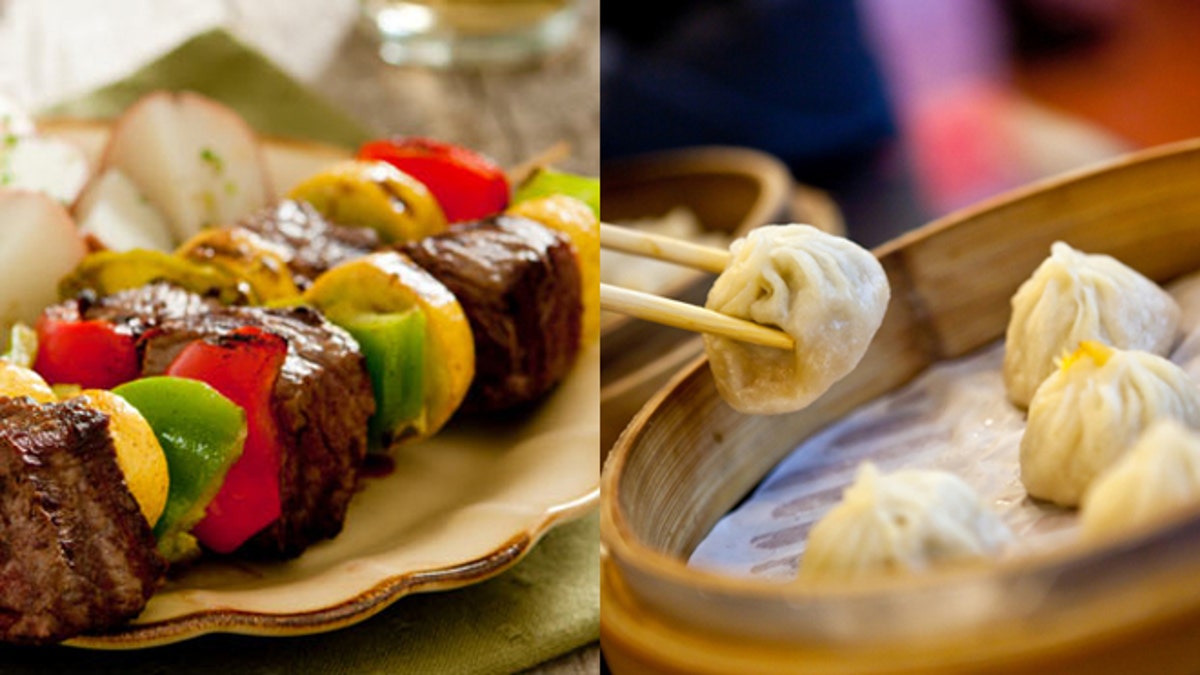
Turkish food in Berlin? Chinese food in Vancouver? You might be surprised. (iStock)
It doesn’t take a world traveler to recognize that a country’s cuisine knows no boundaries. Thanks to globalization, a country’s cuisine can be found in the most unexpected of places, which upon closer inspection, may not be surprising after all.
The phenomenon of foreign cuisines relocating can be traced along the paths of migration — when the Portuguese came to Massachusetts to work on whale ships, they brought along their recipe for fish stew, and when the British Empire welcomed the people of India from the British colonies, curry houses sprouted up along the streets of London. What once was simply the food of an outsider community, however, is now an inseparable part of the cultural identity of these places.
So what does all this mean for the hungry traveler? For one, it expands the culinary possibiltiies in cities large and small. Excellent, authentic international cuisine can be found not only in major metropolises, but also in places where tourists less frequently go.
Can’t afford a trip to France or Spain to indulge in Basque cuisine? Then head to Boise, Idaho, where that food is flourishing. Hungering for the flavors of Havana? You don’t have to wait for the borders of Cuba to open, because there’s plenty of authentic Cuban food to be found in Tampa, Fla.
Instead of a cuisine culture clash, famous cuisine found in unexpected places also means that travelers should expect the unexpected when searching for an alternative to a country's native cuisine. You may find that it’s not pão de queijo but sushi that satisfies your snack craving in Brazil or maybe you’re not longing for crusty baguettes when you part ways with Paris, but the dense and chewy Algerian bread called kesra.
Sometimes the greatest risk when traveling is venturing outside your expectations. Whether you go searching for a city’s international cuisine or stumble upon it, stay open to a place’s unexpected food offerings and you may find that your taste experiences become much richer than you could have imagined. H ere are 10 famous cuisines found in unexpected places.
Japanese Food in São Paolo
Sao Paolo, Brazil has the largest Japanese population outside of Japan, according to the Brazilian embassy with the first Japanese immigrants coming to work on Brazil’s coffee plantations. Besides being a showcase for the iconic architecture of Japanese-Brazilian Ruy Ohtake, Brazil’s largest city is a destination for Japanese cuisine.
Where to eat: Head straight for Liberdade, Sao Paolo’s Little Japan. Each Sunday the neighborhood is host to a Japanese market, Feira da Liberdade, where you can taste traditional Japanese dishes like yakitori (a barbeque kebab) or lamen, a type of ramen. Eat at Aska Lamen, one of the city’s best ramen houses, or for upscale sushi head to Jun Sakamoto.
Turkish Food in Berlin
Turkish guest workers immigrated to Germany in the 1960s and 1970s, and since then Berliners have embraced Turkish cuisine, with donor, or kebab, becoming just as pervasive as ‘wurst in Germany.
Where to eat: You can’t go to Berlin without eating donor kebab (rotating grilled spits of meat that are typically served wrapped in pita). There’s no shortage of stands on most street corners to fulfill cravings. Kreuzberg, Berlin’s Turkish neighborhood, is home to a weekly market where you can find traditional Turkish goods. Hasir Restaurant is a must, where in addition to donor you can try other traditional Turkish specialties.
Middle Eastern Food in Dearborn, Mich.
America’s largest population of Arab-Americans isn’t in a metropolitan capital, but in Deaborn, Mich. Lebanese, Syrian, Iraqis, and other Arabs came to Michigan to work in the auto industry. Today the city’s rich cultural heritage has made Dearborn a culinary landmark.
Where to eat: Traditional Middle Eastern plates can be found at Al-Ameer or La Pita. For Middle Eastern pastries head to Shatila. If you’re lucky enough to visit in the summer, you can try more delicacies at Dearborn’s annual Arab International Festival.
Indonesian Food in Amsterdam
Indonesia gained independence from the Dutch in 1945, but the colonial relationship has brought Indonesian culinary influence to the Dutch capital. If you can’t get to Indonesia or you just want to save on airfare, Amsterdam is the next-best stop for Indonesian cuisine.
Where to eat: Go to Sama Sebo or Tempo Deoloe for rijstaffel, an Indonesian feast that consists of rice surrounded by sides. Restaurant Blauw serves specialties like shrimp crackers and pumpkin-coconut soup.
Algerian Food in Paris
While it should go unsaid that Paris is one of the world’s culinary capitals, you’d be amiss to not enjoy North African cuisine on a trip to the City of Lights. France hasn’t historically had the best of relationships with its Maghrebi immigrants, but there’s no arguing that the flavors of Algeria are a welcome alternative to heavy French fare.
Where to eat: Le Monde de Léa in Paris’ 18th arrondissement is a cozy café-restaurant where you can enjoy couscous along with live jazz. Hearty lamb tagines and couscous paired with Algerian wine can be found at Le Zerda Café. Forget macarons and baguettes, and head straight to La Bague de Kenza for Algerian pastries and kesra bread, an addictive flatbread.
See where you can find more famous cuisine in unexpected places here
More from The Daily Meal
101 Best Food Trucks in America 2012
31 Best Airport Restaurants Around the World
Best Christmas Markets in Europe
Extraordinary Nightly Turndown Services
